The Owl in the Rafters – Nobuhiro Watsuki Anthology
Nobuhiro Watsuki, was a big name in Shounen JUMP during the 1990s, whose success has since fallen under the shadow of more recent popular titles like Bleach, Naruto, and One Piece. Mr. Watsuki’s debut serialized title was the hit series, Rurouni Kenshin, alternatively titled Samurai X for some international releases. Rurouni Kenshin turned out to be one of the biggest titles in JUMP during its publication, and after just two years was adapted into the anime series that would be one of the big hit titles to air overseas in the US, on Toonami starting 2003.
The story of Rurouni Kenshin follows its titular protagonist, former assassin, Kenshin Himura, through his journey in search of atonement in the years following the Meiji Restoration. The historical fiction aspects of the title played themselves to many existing tropes in shounen manga at the time, but also incorporated a strong character driven series of side-stories, most often in the form of origins stories detailing the motives for nearly all of the major characters, both heroes and villains; something not terribly common in many anime.
As a fan of many Western comics, namely Marvel titles like The Amazing Spiderman, The Incredible Hulk, and his personal favorite, The X-Men, Watsuki draws heavy influence from those popular American titles, as well as the popular trends in Japanese manga when writing. This unique blend of Western and Eastern stylization in story telling is one of the very distinguishing features of Watsuki’s work that sets him apart from other artists and makes his characters so memorable.
His art style also reflects this mix of influence in the way his sense of design is very much that of your typical shounen artist, while his actual choice of subject matter and sense of direction with action and drama display an almost contradictory dark mood. It was this sense of style that helped make his first serialized title such a big hit, and it is the evolution of this sense of style that I’d like to focus on in this overview.
Taking a step back, Watsuki’s career got its start when his one-shot, Podmark, his first professionally printed manga, won him shounen JUMP’s annual Hop Step Award: an award annually awarded to promising young, new artists. The one-shot itself is a rare find, and with no English translation available. I’m afraid I can’t comment on the story or even art. What I can mention, however, is the more recent history of the Hop Step Award: apart from Mr. Watsuki, other recognizable winners of the Hop Step Award include Eiichiro Oda, of One Piece, who won in 1994 with his one-shot, Monsters; Kubo Tite of Bleach, who was a contest finalist in 1995 with his one-shot, Fire in the Sky, although it did not win; and Masashi Kishimoto, of Naruto, who won the award in 1996 for his one-shot; Karakuri. But while these now popular authors all managed to make themselves known with the help of this newcomer award competition while in their 20s, it is quite notable that Watsuki’s Podmark won him the award in the ’80s, while he was still just a high school student.
Following his debut with the Hop Step Award, Watsuki worked as an apprentice under the well known artist, Takashi Obata(artist of Hikaru no Go, Death Note, and Bakuman), on the 1991 manga series, Arabian Majin Bokentan Lamp Lamp: a title only released outside of Japan in France in 1996, under the title Rampou – Le Génie Au Poing D’acier(The Genie with the Fist of Steel). Looking at the work of both artists you can see where Obata’s influence has affected Watsuki’s art: they share a similar kind of bold, clean line art, and a heavy use of shadow and high contrast that has become something of a signature for the both of them.
Just after his apprenticeship with Obata working on Lamp Lamp, Watsuki submitted a series of samurai themed one-shot titles that would both earn him and his big serialized title and lay down the groundwork for several of his major characters. The first of these one-shots was Sengoku no Mikazuki(literally translates as “Crescent Moon of [the] War[ing] States”), which featured the character, Hiko Seijuro, who would reappear in Rurouni Kenshin as Kenshin’s teacher, the master swordsman and heir to the legendary Hiten Mitsurugi sword style. The following two one-shots would be the pilot chapters to Rurouni Kenshin, titled Rurouni: Meiji Swordsman Romantic Story, introducing the character of Kenshin Himura and establishing his role as the wandering swordsman with a vow not to kill.
Apart from the original manga and anime series, two story arcs of the manga that were omitted from the original television series were revisited in the beautifully redesigned OVA titles, Trust & Betrayal, and Reflections, released in 1999 and 2001, respectively. The four part OVA, Trust & Betrayal, showed off Watsuki’s sense of drama in a way the animated series hadn’t managed, through the back-story of Kenshin’s life during the Japanese Revolution, while Reflections recapped the entirety of the manga series, including the climactic finale arc that the anime had left unanimated, until finally coming to a dramatic epilogue not included in the original manga. These two OVA series are most noted by the drastic change in art style, different from even Watsuki’s own original work. The gritty down to earth look and feel of the new art gave both stories and added weight that a more conventionally exaggerated and stylized art style couldn’t be expected to give. Lastly, just after the completion of Rurouni Kenshin’s publication, Watsuki released a final spinoff one-shot entitled, Yahiko no Sakabatou(Lit: “The Reverse-blade sword of Yahiko”) which followed the adventures of Miyoujin Yahiko five years after the end of Rurouni Kenshin.
In any case, I’m sure you all are familiar with Rurouni Kenshin to at least some small degree, so I’ll avoid spending too much time on the details of the plot. One distinct feature of Rurouni Kenshin that I must touch on before we continue however is the lead character: Kenshin Himura, was one of the most notable prototypes of the modern anime/manga shounen hero, in that he popularized the use of several traits of the Byronic hero that proved incredibly popular during the late 90s and early 2000s
For those unfamiliar with the works and influence of English Romantic author, Lord Byron; a “Byronic Hero” is traditionally a flawed hero falling into the category of anti-hero, who is most commonly defined by introspective habits, inner conflict with him/her self, and a troubled past often involved with crime(s) of some sort, as well as a host of other much more critical character flaws. I say very specifically, “traits of the Byronic hero”, because the target audience in question prevents there being any benefit to a true Byronic hero in a shounen manga: no matter his flaws in the past, it is a staple of shounen manga that the hero must always remain admirable and respectable in the present, and while Kenshin maintains that standard, he also presents us with one of the more notable heroes of the past twenty years to be haunted by his past and at ends with a dark side, or inner demon.
The inner demon, both literal and figurative, is a theme that has been incredibly popular and perhaps even overused since the mid 90s. To name a few examples that followed Rurouni Kenshin’s publication; Inuyasha of Rumiko Takehashi’s Inuyasha: A Feudal Fairy Tale, Mibu Kyoshiro of Samurai Deeper Kyo, Yugi Moto in the original Yu-Gi-Oh, Kurosaki Ichigo of Beach, Uzumaki Naruto of Naruto, and most recently Soul Evans of Soul Eater, all exhibit this distinct character trait to various different extents.
It was in the aftermath of this series and looking back on his character, Himura Kenshin, that brought Watsuki to a realization that he was not satisfied with his character writing. So, getting away from Rurouni Kenshin and moving ahead in Watsuki’s career, the next title I’d like to bring up is a little known one-shot by Watsuki that has been something of an oddity in his work. The one-shot Meteor Strike, was a bizarre story of a normal schoolboy in modern Japan being granted super human powers after being struck in the head by a falling meteor.
Watsuki himself has shown some dislike of the story and characters in Meteor Strike, as he felt they reflected too much of the mentality of characters in Rurouni Kenshin, namely his heroes. While a big hit in terms of popularity and sales, Watsuki has admitted to feeling as though Rurouni Kenshin’s characters, Kenshin in particular were out of place: admittedly a 30-year-old pretty boy is far from the typical shounen hero. Meteor Strike, was thus the first small, and in the author’s own eyes, unsuccessful step towards a more appropriate hero young boys
The next attempt Watsuki made in his ongoing quest to create the perfect shounen hero was the slightly obscure 2001 serialization, Gun Blaze West. Despite being a fairly solid shounen title, it was canceled after a very short six-month run in the weekly shounen JUMP. In the opening pages of the first volume, Watsuki expresses that on a road trip of America, he found himself inspired by the cacti of the Arizona desert.
Set in a quirky, fictional 1800s America, the story follows a young boy named Viu Bannes on his adventure westward, from Winston Illinois into the American frontier, to find a fabled land known only as the Gun Blaze West. The story itself has a feel almost comparable to a mix of Mark Twain’s Huck Fin and Popeye the Sailor. The comical, lighthearted art style and surprising attention to detail with background work keeps every page easy on the eyes without feeling too empty or too cluttered. When things get dark however, they get very dark. Watsuki has no reservations about splattering blood across panels or letting villains get away with shooting innocent bystanders and burning down homes. Watsuki’s heroes are often anything but bullet proof, and can take quite a beating before coming out on top at the end of the day.
The shortcoming of this may have been entirely circumstantial, as the American Wild West is hardly a popular subject with young Japanese boys, and as Watsuki himself claims, his “sensibilities were way off for a shounen title.” His sense of drama and character development can seem fairly heavy when you really stop to consider who his audience is, but it’s his willingness to display some truly heavy drama in the context of a young boys’ story that sets him apart from the run of the mill author. But, while Watsuki continued to seek out his elusive archetypal hero, he managed to assemble a host of supporting characters who would go on to later influence the characters of his third serialized title, and his second big hit.
Busou Renkin: Arms Alchemy was Watsuki’s third serialized titled and would prove to be his second successful series. At first glance Busou Renkin appears to be a shameless hop onto the Bleach and Full Metal Alchemist bandwagon with it’s somewhat barebones formula:
>Normal boy meets mysterious girl.
>Mysterious girl rescues/revives boy from death.
>Boy gains mysterious powers he uses to fight monsters.
This plot premise will seem all too familiar to most readers well accustomed to shounen manga, and it may seem almost discouraging at first, and most certainly was a high hurdle to get over for many of Watsuki’s fans. Once we glance over the cast of Rurouni Kenshin, and the western comic-book influence he has put into many of his character there, not to mention the entirely unorthodox themes of Gun Blaze West, it becomes clear that there’s something odd about Busou Renkin in comparison: It’s just not Watsuki’s style.
For one, the main character, Mutou Kazuki, is very much the generic shounen hero, and unlike both previous works and the ones to follow, the story and setting are entirely commonplace, set in modern Japan, requiring none of Watsuki’s beloved dips into historical research. In his search for an appropriate shounen hero, Watsuki managed to par down his own sense of style to arrive at this conclusion, and so after three progressively more shounen-esque heroes, Mutou Kazuki is the final product of Watsuki’s attempts to appeal to his general audience, and while seemingly bland, he is in fact the archetypal shounen hero of the time.
All in all, while it turned out to be a popular series, with both a 79+ chapter serial publication and a well received, 26 episode anime series, it is almost certain that Watsuki made Busou Renkin in a manner altogether different from his other work. I would describe what Watsuki did as having made a manga that was specifically designed to be a hit series, first and foremost: a project in which he only took his time to develop his characters and story until after securing his readership and ratings; an unusually cunning and analytical approach to manga, both for Watsuki personally, and within the industry as a whole.
He succeeded in coming to a nearly perfect understanding of what makes a hit series and fashioned all those key parts into a single series with little to no excess time or space wasted. Several rough concepts and designs used or scrapped from the Gun Blaze West project make reappearances in Busou Renkin, including an homage to Rurouni Kenshin and the name Samurai X, the Armor/Buster Baron, and even the spotlight antagonist Papillon.
Finally we come to Mr. Watsuki’s most recent work. Following the end of Busou Renkin in 2005, Watsuki submitted a one-shot into the special edition Akamaru JUMP*, titled JUMP the Revolution! His one-shot, Embalming –DEAD BODY and BRIDE-, and an unusual follow up one-shot entitled, Embalming II –DEAD BODY and LOVER-, entered into The Revolution! in the following year, set the stage for the now ongoing irregular publication in the monthly magazine, JUMP SQ, Embalming –The Another Tale of Frankenstein-. As you may have guessed from the preposterously Engrishy title, the story derives its premise from Mary Shelley’s classic novel, Frankenstein; or, the Modern Prometheus.
The story takes place in late 19th Century Europe where the salvaged notes of Dr. Viktor Frankenstein have been passed around the scientific underworld, and mad scientists retracing Dr. Frankenstein’s footsteps unleash a variety of undead, patchwork monsters of their own upon an unsuspecting Europe. The multitude of advances and alterations made on Dr. Frankenstein’s original design paint Embalming’s cast of characters with a wide range of super-powered monsters, vaguely reminiscent of one of Watsuki’s favorite American comic book series, The X-Men.
The main characters are a pair of young boys who watched their families get killed and dragged away by a renegade Frankenstein’s Monster in the middle of a blizzard. Presumably it took only the adults because it needed their bodies to repair/upgrade itself, and the tiny organs of a couple of children wouldn’t be very useful. The two boys, each with their own reason, spend the next several years seeking out the monster that killed their families in search of answers and revenge. In an interesting return to his roots, Watsuki drops his perfected shounen hero model found in Busou Renkin, in favor of his personal sense of style, with a young adult hero with a chip on his shoulder.
I won’t spoil any more of the story, though I will say that if you intend to read it, you’d do best to read both -DEAD BODY and…- one-shots before starting The Another Tale of Frankenstein. Of course, I’d also recommend you learn Japanese, because sadly, the three volumes published to date have seen no American licensing. An alternative to learning Japanese however might be to learn French, because France somehow managed to be the only country outside of Japan to get their mitts on the series. However, the first of the two one-shots, -DEAD BODY and BRIDE-, was included in the final 10th volume of the English publication of Busou Renkin.
So, here we find ourselves looking back on a nearly 20 year long career, with 4 serialized titles, 2 big hits, and an entire trend in character writing to his name. His innocent and cartoony art style is an appropriate fit for a shounen artist, although his vision presses on some of the darker limits of drama in the shounen demographic. While his popularity may have died down, his art and writing certainly haven’t gotten any worse, and he continues to sport a fantastic sense of style in art, design, and writing. I hope you’ve enjoyed this overview of the career of mangaka, Nobuhiro Watsuki, and after everything that has been said, I hope you’ll take the time to look into some of his work.
*Akamaru JUMP is a seasonal publication that replaces the normal weekly JUMP publication on holidays, when the weekly serial authors have no deadlines for the week.





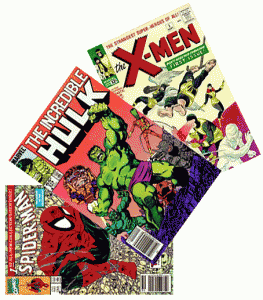


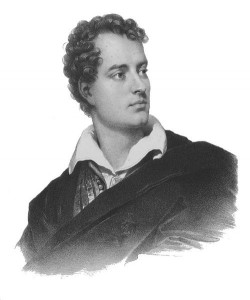
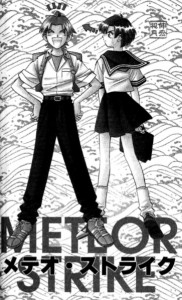
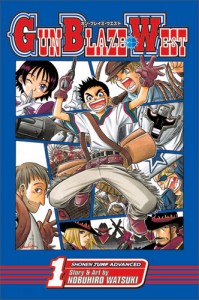
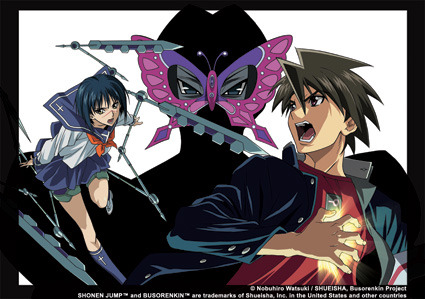
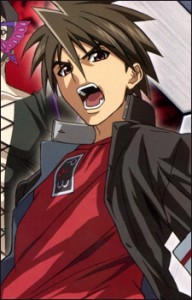
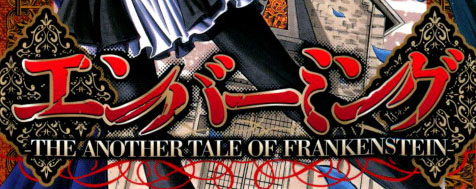
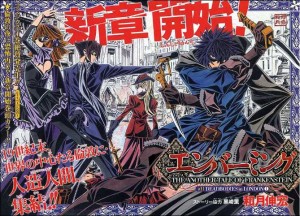
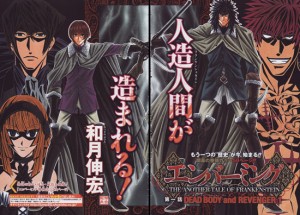

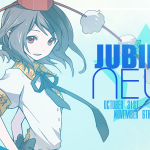
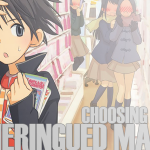

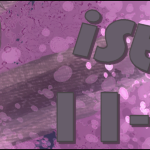









It’s ironic because I seem to only like your writing style when I’m in the mood to learn about something, but somehow near the end I found myself more interested. I’m not a huge fan of Kenshin personally—not that I didn’t like it—though I think it was far more interesting seeing the different stories he went through. Honestly, the latest story seemed the most intriguing by far.
I can’t wait to see more from you, and I think plenty of our users will also agree that this educational burst is a nice addition to 91.8 The Fan. 🙂
Welcome to the team!
[…] 91.8 The Fan » Blog Archive » The Owl in the Rafters – Nobuhiro … […]
Doing an article on Watsuki for your first feature here was a nice choice. I applaud you.
I didn’t know half of that, and until hearing about your post didn’t know Busou Renkin was by the same mangaka as Rurouni Kenshin… I’m quite interested in the latest work though, being a fan of manga and marvel, the hint of X-Men in the cast might appeal to me.
Buso Renkin just got pushed up my need to watch list. Nice article. Rurouni Kenshin is a fav so very interesting learning more about it and author Watsuki.
[…] 91.8 The Fan » Blog Archive » The Owl in the Rafters – Nobuhiro … […]
iva gotta question.is samurai x reflections canon to the manga story also?if it is im sad that kenshin dies(rlly sad T_T)
@ sasukeuzi: no, the ending to reflections was not in the manga and not Watsuki’s doing, at all. In fact, Watsuki was even a bit upset about it: He felt Kenshin was put through enough and that he deserved a happy ending.
Nice work with the article, I enjoyed it quite a bit. I’d like to see one about Hiro Mashima in the near future
I like the article… It made me look at my Rurouni Kenshin collection with nostalgia. ^^